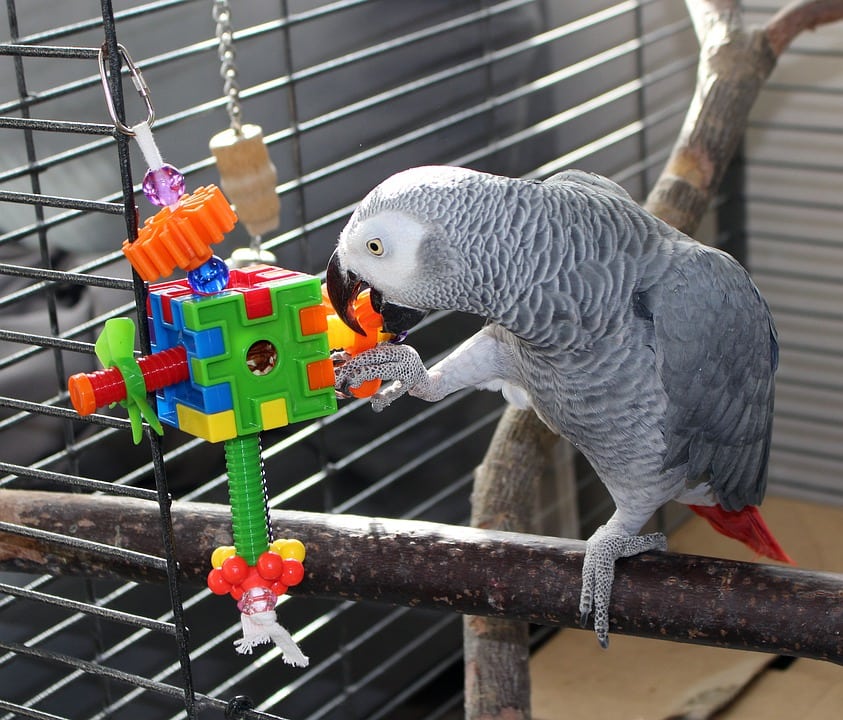VET APPROVED

The information is current and up-to-date in accordance with the latest veterinarian research.
Learn more »Click to Skip Ahead
There are hundreds of different dog breeds out there, and they’re all unique. But there is one thing that every doggo loves, and that’s getting some quality sleep. Even the most energetic pups like to catch some Zs whenever they can. And, just like cats, rabbits, and other pets, they dream when falling asleep. Unfortunately, it is also believed that dogs can have nightmares.
Is this normal? Should you be worried? What can you do to protect the fur baby? What are the most common signs of a dog having a nightmare? Should you wake the four-legged bud ASAP? And finally, how can you ensure the pet mostly has good, happy dreams? Our experts have the answers!

Can Pups Have Dreams Like Humans?
Of course, dogs can (and do) have dreams, based on what we know today.1 And, while adult canines get enough rest in 12–14 hours, pups often sleep for 18–20 hours during the most intense growth stages. But, in contrast to humans, they don’t take an hour to enter the deep phase. Dogs only need about ten to twenty minutes to start dreaming. That said, dogs spend around 2.9 hours a day in the REM (rapid eye movement) phase, while in humans this is closer to 1.9 hours.2
That’s where the dreams happen. The rest of the long, sleepy hours are filled with the light/slow-wave phase. Like many mammals, dogs have irregular sleep patterns. They can wake up and go back to sleep multiple times during the day. Also, while humans have 4–6 sleep cycles per day (each roughly around 1.5 hours), dogs get up to 20 cycles, but they’re much shorter: 15–20 minutes.

Do They Experience Nightmares While Asleep?
What about bad dreams? Do they ever occur in the middle of a dog’s REM phase? Sadly, yes, it seems that dogs can have nightmares, but a lot of what happens when and if a dog experiences a nightmare remains unknown to science. It’s also more likely that the majority of the dog’s dreams are not nightmares, despite their sometimes alarming-looking body language and vocalisations. Most of it is just normal dog sleep.
It’s possible that dogs relive the events they experienced that day when they dream. While the body is asleep, the brain may be trying to process everything that has happened. Therefore, the events that took place earlier could potentially impact what dreams the dog will see when dozing off. In many ways, dreams are like a combination of images, visions, and emotions. This is true for humans, and we can only assume it applies to dogs and many other pets.
How Do You Know It’s Not Just a Regular Dream?
We suspect that dogs dream about things that happened several hours ago (like walking, running, or playing with their owners). Or it can be something that took place a while back. Smaller breeds have dreams more often, yet they’re rather short. But is there a way to tell whether it’s just a regular dream or a nightmare?
In most cases, it’s not that easy to tell. For example, if the dog is growling, yelping, or crying, they could be having a very bad dream, but there is no way to tell for sure. Similarly, if not exactly the same body language also occurs in what we think of good dreams. When dreaming, the pet may occasionally twitch (this happens during the REM phase), whimper, snore, and grumble, and sometimes those noises can be loud or disturbing. And let’s not forget about the subtle paw movements!
Why Do Dogs Twitch in Their Sleep?
Don’t worry—this is completely normal behavior. When pups enter the Dreamland, their brains minimize muscle movement to avoid accidents. The dog might be jogging, jumping, or fighting someone in their dream, but almost no muscle will move during the REM phase. In this regard, dogs are very much like cats and humans. Oh, and we say “almost” because the twitching does happen sometimes.
A quick note: Michel Jouvet, a renowned French neuroscientist, is famous for running tests on animals to study their sleeping patterns. In one of his studies, he transected the pons in a cat’s brain.3 The pons is a structure that induces paralysis during REM sleep. So, with this part of the brain “on hold”, the kitty was walking and even running while in a deep sleep!
Does the Sleeping Position Matter?
Dogs that sleep on their sides feel safe and secure. In this position, their legs and tail have more room for “maneuvers” during the deep sleep phase. But that doesn’t mean catching Z’s while relaxed will protect the pup from nightmares or make them less frequent. Even a puppy that’s curled up in a cute, tiny ball can have this unpleasant experience.
As for the so-called “Superman posture” (when the dog rests comfortably on their belly and the legs are spread out), it’s the go-to position for active pooches. Also, dogs rarely sleep on their backs unless they feel 100% safe, as that leaves their weak spot—the stomach—exposed.

Waking a Dog Up Amidst a Nightmare: A Good Idea or Not?
If you’re convinced that your four-legged bud is having a nightmare, the first impulse is probably going to be to wake them up. That’s a % natural reaction: we want to help our fur babies, hug them, and comfort them. However, it’s NOT recommended to get handy (like shake the pet). Waking a dog up in the middle of a bad dream this way will only startle them and may make matters worse.
The thing is—the dog may think they’re being threatened under the influence of the dream and may try to nibble and defend themselves. So, to play it safe, just let the dog “beat” the nightmare on their own terms. While this might sound a bit harsh, most nightmares last for 2–3 minutes and won’t damage the pup’s mental or physical health in any way. Once the scary dream is over, the pooch will get back to careless snoozing.
What Else Can a Dog Owner Do?
You could try to reach out to the sleepy head with your voice. Be patient: the pup might not wake up the second you call their name, but consistency usually gets the job done. Don’t yell or make loud noises, though. Use a reassuring tone and give the fur baby time to get back into the real world. Now, if the nightmares have started recently, they might be caused by stress or significant household changes.
While dogs are more vocal about their pain or discomfort than cats, it’s still up to you to recognize the signs and stay one step ahead of a potential issue. So, make sure to have the dog checked. It could be that the pup is hurting or just feeling anxious or scared, and that’s what’s causing all those bad dreams.
Helping a Dog Avoid Nightmares: A Quick Guide
Make the pup’s life as stress-free as possible. See that they get complete and balanced food, sufficient playtime, and exercise. Early socialization is also very important. If the fur baby is open and friendly toward other pets and strangers, the chances of them having a scary or unpleasant experience will be much lower. Next, focus on the room/crate that the dog sleeps in.
Try to create the perfect environment that makes the dog feel safe and content. Some relaxing music, a cushy bed, and the pet’s favorite toys will help with that. Speaking of the crate, it needs to be big enough for the furry bud not to be cramped. If nothing helps, a stress-relief calming coat could do the trick. While there’s no science proving the efficiency of anxiety wraps, they do work sometimes.
- Keep the bed away from busy areas such as hallways, doors/windows
- Make sure it doesn’t get direct sunlight or get hot
- Wear the pup out before bedtime so that they instantly fall asleep
- Keep the day exciting and filled with happy experiences
- Don’t leave the pet alone for more than a few hours to avoid anxiety
- Don’t crank the TV/radio up to 11 or make any loud noises
- Use positive reinforcement in training: don’t scold the dog!
- Have the fur baby checked thoroughly. Make sure they’re healthy
- Consult with a vet or a canine behaviorist if you think your dog is anxious or stressed
Is It Really a Nightmare or a Seizure?
Sometimes, it can be a bit confusing because dogs dreaming may appear similar to pups that have seizures, especially to an untrained eye. So, how do you know which one is it? First, a pet that’s having a seizure will collapse on their side and lose consciousness, while their eyes roll back or move from side to side. Muscles become tense and cramped, with leg padding movements fierce and chaotic.
Bowel movement and urination is another common sign. Essentially, a seizure is a rapid, rampant spike of electrical activity in the brain’s cells/neurons. This burst of energy often causes twitching, stiffness in the dog’s muscles, paddling legs, drooling, frothing at the mouth, and other jerky movements. And one more thing: you won’t be able to reach the dog or wake them up from a seizure, and do not attempt it. Some dogs will have a very rigid jaw and may inadvertently bite if you try to hold their face still. It’s best to contact your vet urgently at the time and place soft padding next to the dog if their body is close to any objects or furniture that may harm them. Do not cover them up, as seizure activity tends to raise body temperature. Seizures generally last a few seconds to a couple of minutes.

Conclusion
Dogs are precious, and seeing them scared or distressed is never easy. That’s why many owners rush to “save” their pups from what they think is a bad dream. However, that’s not always the best course of action, especially if you start shaking or lifting the dog instead of calling to them with your voice. While nightmares can be scary, there is no real way to tell if your dog is having one, or just another one of their usual dreams.
With that, it’s very important to make sure the fur-heavy family member is safe and comfortable in their bed, free of stress, well exercised and mentally stimulated. This way, you’ll be able to help them avoid most nightmares and live a healthy, happy life. Also, don’t forget to consult with a veterinarian if something’s bothering you in the dog’s behavior.
- Animals have complex dreams, MIT researcher proves | MIT News | Massachusetts Institute of Technology
- REM SLEEP SIGNS ROSTRAL TO CHRONIC TRANSECTIONS AT THE PONTOMEDULLARY JUNCTION – PMC
- Pons: What It Is, Function & Anatomy
- Anxiety Vests for Dogs | VCA Animal Hospitals
- What Do Dogs Dream About? – American Kennel Club
- Do Dogs Have Nightmares? | PetMD
- Do Dogs Dream? | VCA Animal Hospitals.
- Why Do Dogs Sleep So Much? – American Kennel Club
- Sleep in the dog: comparative, behavioral and translational relevance – ScienceDirect
- Sleep Duration and Behaviours: A Descriptive Analysis of a Cohort of Dogs up to 12 Months of Age
- Sleep-wake cycles and other night-time behaviours of the domestic dog Canis familiaris – ScienceDirect.
Featured Image Credit: Magda Ehlers, Pexels












